There’s just something about earthy tones that hits different. You know that calm, grounded feeling you get when you walk into a room that feels warm but natural — like it’s quietly saying, hey, slow down a bit? That’s the magic of an earthy living room.
It’s cozy without being cluttered, stylish but never sterile. It’s where comfort meets calm, and everything just flows.
If your space has been feeling a little cold or flat lately, a few earthy touches can transform it into something beautiful — something that feels like you actually want to spend time there.
So here are 11 warm earthy living room ideas to help you get there. Simple, realistic, and oh-so-inviting.
1. Start With a Natural Color Palette
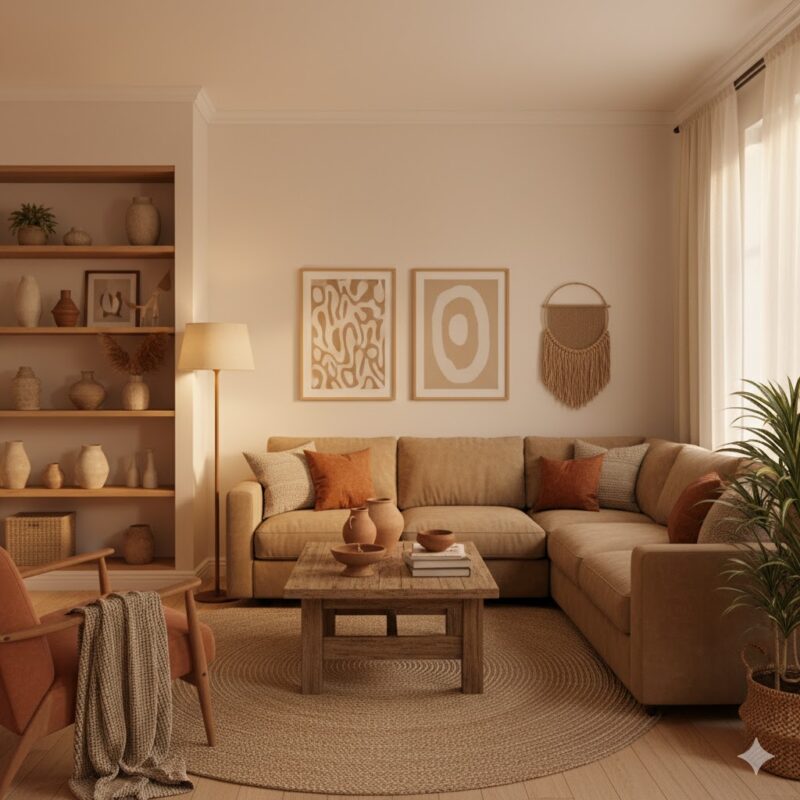
The base of any earthy space starts with color — think beige, taupe, caramel, soft browns, olive greens, muted clay, and rust.
These tones instantly warm up a room without feeling overdone. Try painting your walls a soft beige or greige (that perfect mix between gray and beige). It becomes a backdrop that lets everything else shine.
If you’re nervous about too much brown, balance it with creamy whites or warm grays. Earthy doesn’t mean muddy — it’s about warmth and balance.
2. Bring in Wood — the Real MVP of Warmth
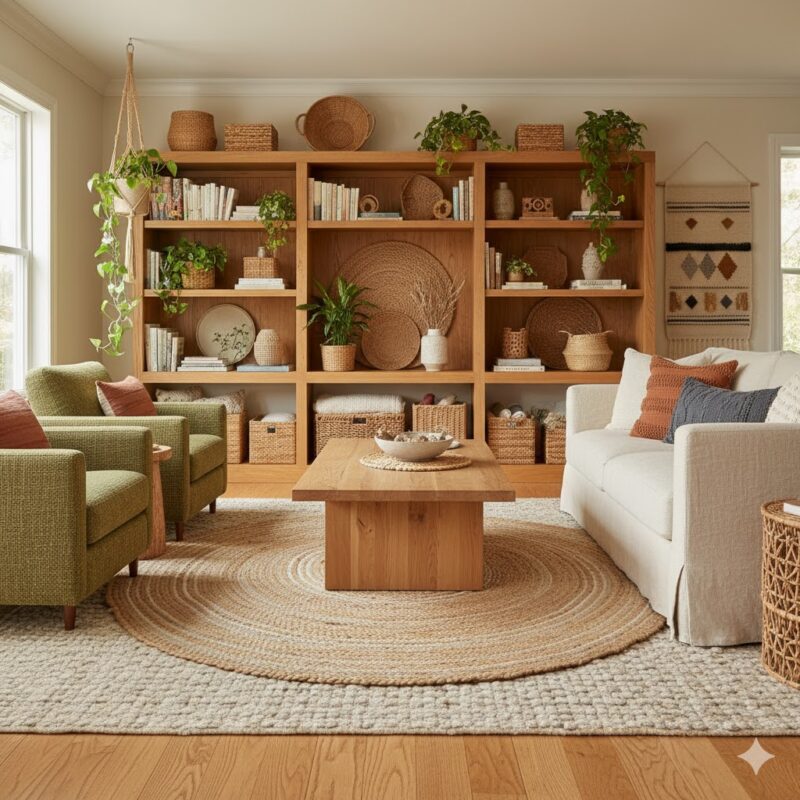
Wood has this natural ability to make a room feel welcoming. Whether it’s oak floors, walnut furniture, or even just a wooden tray, it adds depth and texture instantly.
Mix light and dark tones — a honey oak table with darker walnut shelves, for instance. If you’re renting or on a budget, use peel-and-stick wood panels or furniture with wood veneer finishes.
Even something small, like a rustic wooden bowl or side table, makes a noticeable difference.
3. Layer Different Textures
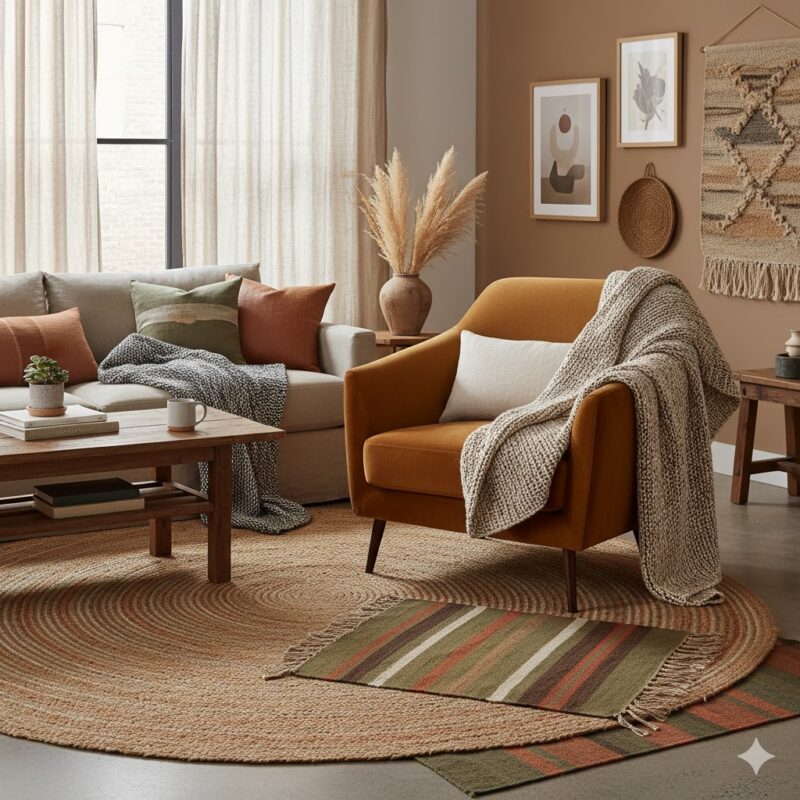
Earthy spaces are all about feeling — soft, natural, tactile. Mix materials that invite touch: linen, jute, cotton, velvet, wool.
Layer throws over the sofa, pile up pillows, and let things feel a little imperfect. Texture adds that cozy, collected vibe that makes a space feel lived in — not staged.
And don’t forget rugs! A jute or woven rug underfoot instantly anchors the room and makes it feel warmer.
4. Use Warm Lighting
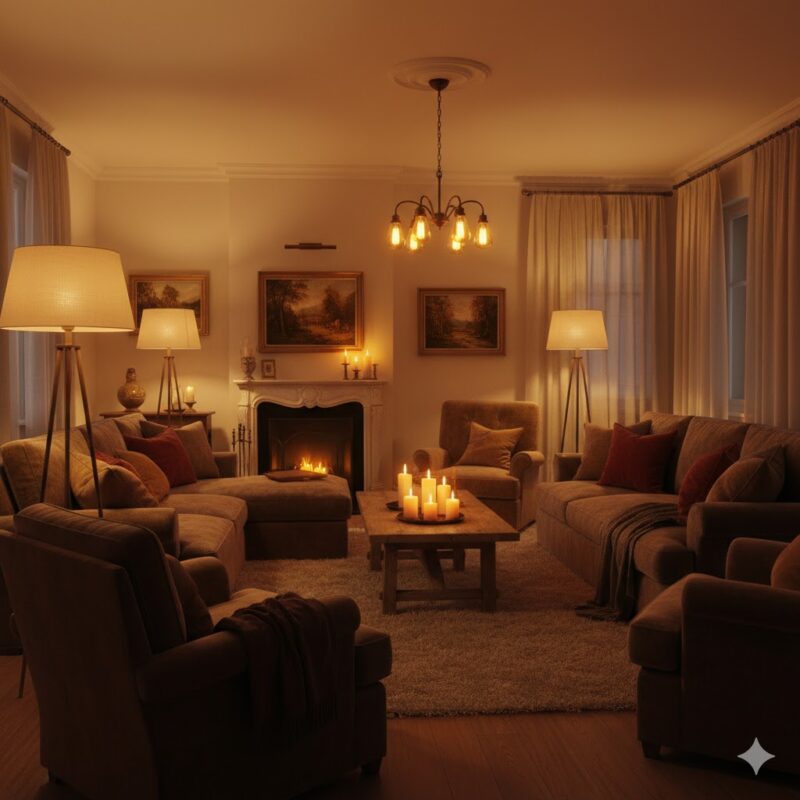
Lighting changes everything. Cool white bulbs make earthy tones look gray and lifeless, while warm bulbs enhance every shade beautifully.
Use floor lamps, table lamps, and string lights — not just overhead lighting. Aim for a soft, layered glow that feels like sunset indoors.
Candles help, too. Cluster a few on a tray, or try a flickering LED option if you want the look without the mess.
5. Add Greenery (Nature’s Perfect Accent)
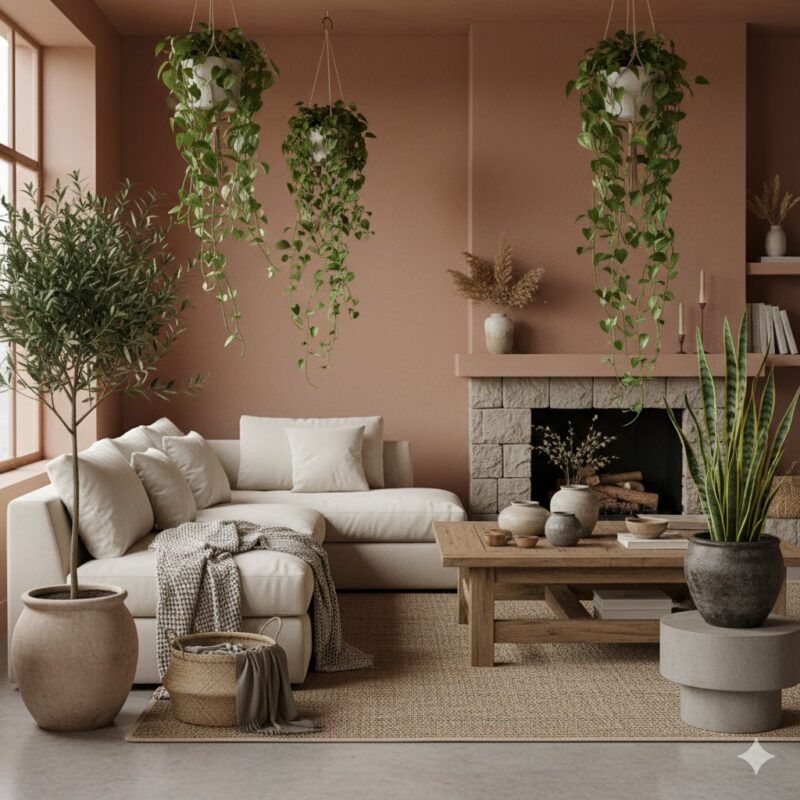
Plants breathe life into an earthy space. They break up all the browns and neutrals, adding movement and freshness.
Try an olive tree in a corner, a trailing pothos on a shelf, or a few succulents on the coffee table. Choose terracotta or stone pots for that grounded, organic feel.
And if you’re worried about upkeep, high-quality faux plants do the job perfectly fine.
6. Choose Earthy Art and Wall Decor
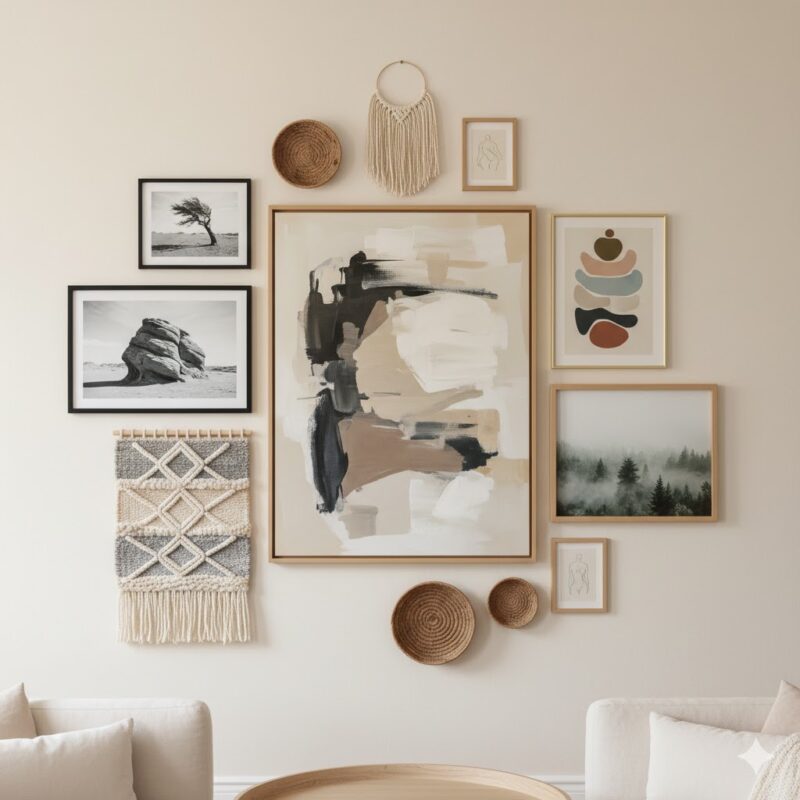
Art pulls everything together — but skip the bold, glossy prints. Go for nature-inspired pieces: soft landscapes, abstract forms in beige and rust, or simple line drawings.
Woven wall hangings, wood frames, or even fabric art panels add that earthy dimension while keeping things calm and cohesive.
You can even DIY your own textured wall art with plaster or clay tones — it’s easier than it looks and adds personality instantly.
7. Bring in Stone, Clay, or Ceramic Elements
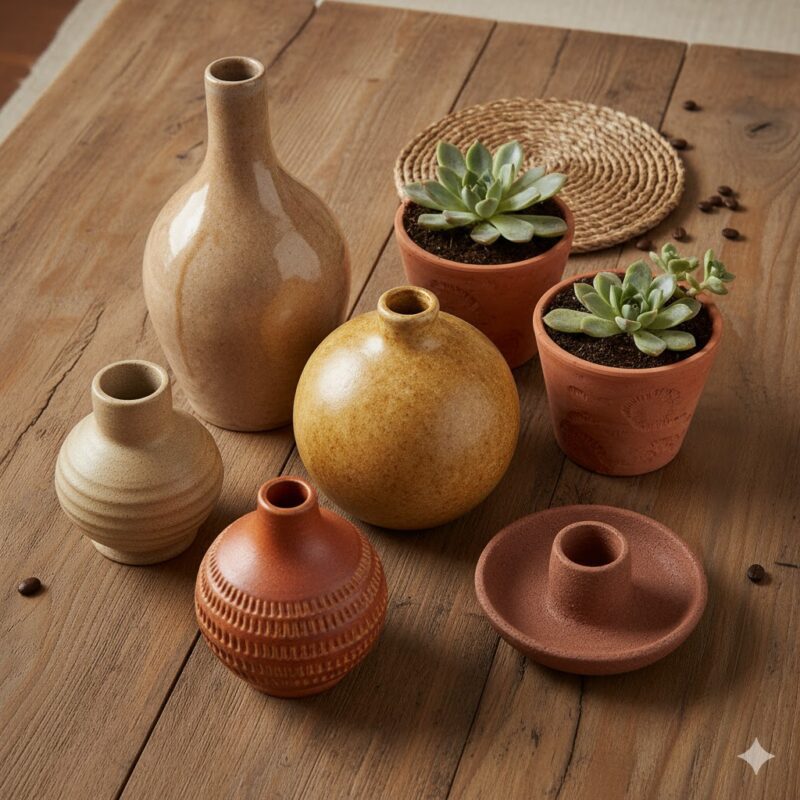
Natural materials like stone, clay, and ceramics give your living room an artisanal, organic edge.
Think clay vases, ceramic bowls, terracotta planters, or stone coasters. They add visual weight and authenticity — plus, they age beautifully over time.
A few handmade pieces (even from local markets or thrift shops) make your space feel unique, not mass-produced.
8. Mix Modern and Rustic
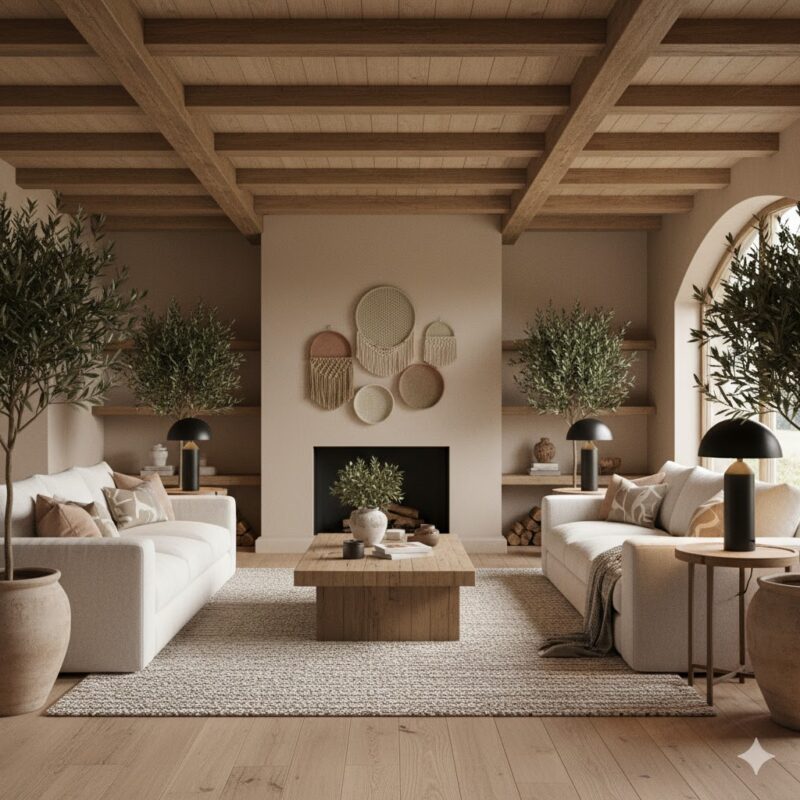
The best earthy interiors strike a balance. A clean-lined sofa paired with a rustic wooden table, or sleek lamps next to woven baskets — that contrast creates interest.
You don’t have to pick a lane. Let rustic meet modern halfway. It keeps the room feeling grounded but still fresh.
If everything’s too matchy, it can start to feel flat. A mix of styles adds life and texture without breaking harmony.
9. Add Woven Accents
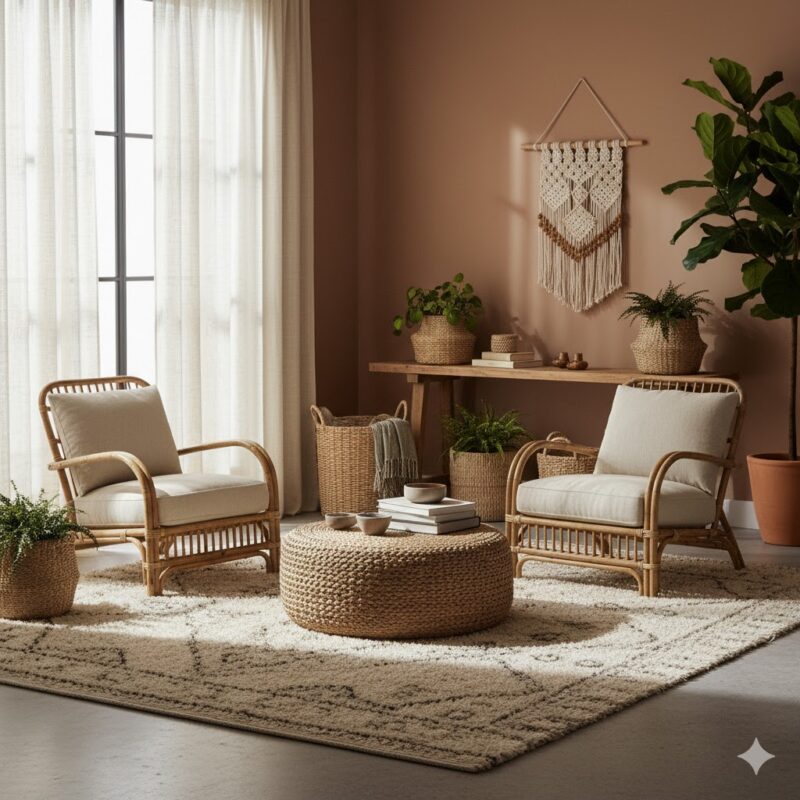
Wicker, rattan, cane — all of it adds beautiful warmth and dimension.
A woven chair, a set of baskets, or even a rattan tray brings texture without overpowering the room. Use these accents for storage, too — toss in blankets or magazines. Functional and pretty.
Pro tip: keep your woven tones within the same color family as your wood — it keeps everything cohesive.
10. Layer with Cozy Neutrals
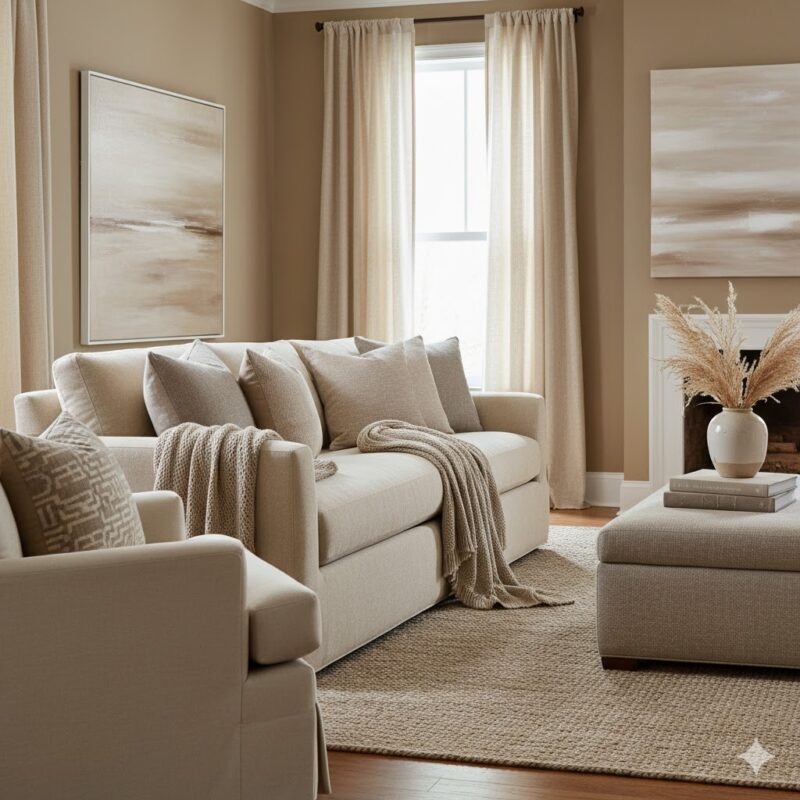
Earthy doesn’t have to mean dark. A mix of creamy neutrals creates softness while keeping things bright.
Start with a neutral base — beige sofa, cream rug — and add layers of warmth through tan or caramel-toned accents.
It’s timeless, soothing, and you can always add pops of color through pillows or art when you crave change.
11. Embrace Imperfection
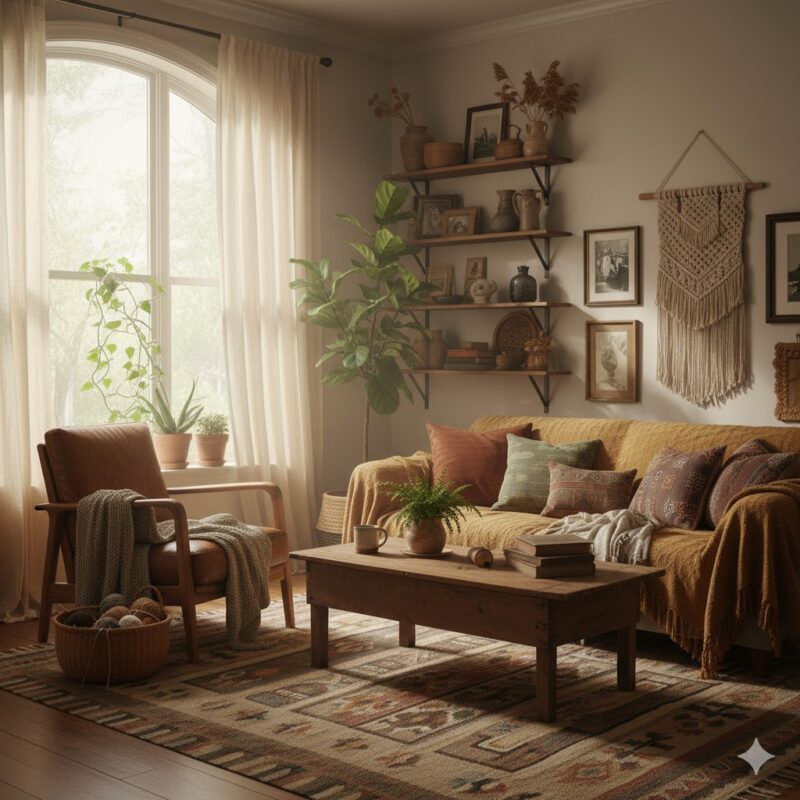
This might be the most important one. The charm of an earthy living room lies in its imperfection.
A slightly uneven pottery piece. A frayed throw. A vintage coffee table with a few scuffs. That’s what makes it feel human.
Let your space evolve naturally — over time, with character. The goal isn’t perfection. It’s creating a space that feels warm, real, and grounded in comfort.
Final Thoughts
An earthy living room isn’t about trend-chasing — it’s about connection. With nature, with texture, with calm.
It’s a place where you can breathe a little easier, sip your coffee a little slower, and just be.
Start small — maybe a new rug or some clay accents — and build from there. Soon, you’ll look around and realize your space doesn’t just look cozy… it feels like home.